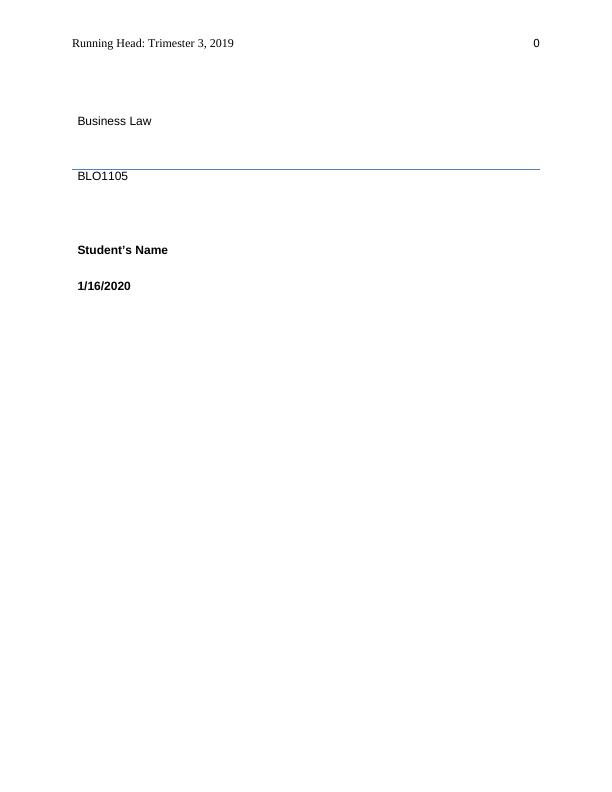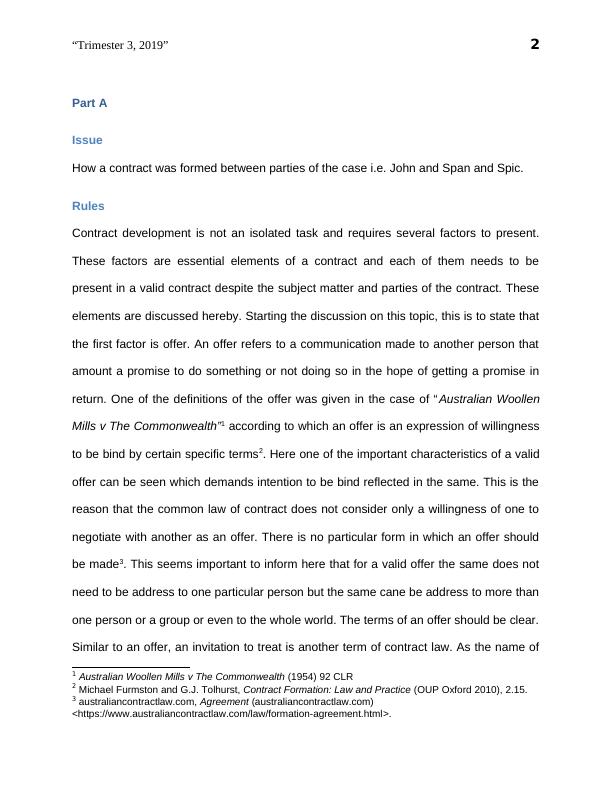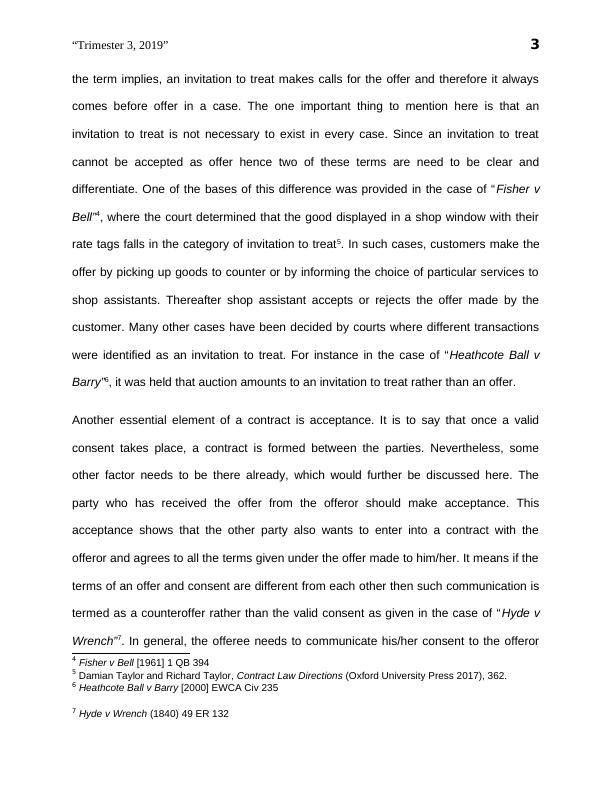Rules Contract development is not an isolated task
John, a recent business graduate, has an appointment with the CEO of Big Bank and takes his expensive suit to a local drycleaners, Span and Spic, for cleaning.
12 Pages2476 Words18 Views
Added on 2022-08-26
Rules Contract development is not an isolated task
John, a recent business graduate, has an appointment with the CEO of Big Bank and takes his expensive suit to a local drycleaners, Span and Spic, for cleaning.
Added on 2022-08-26
ShareRelated Documents
End of preview
Want to access all the pages? Upload your documents or become a member.
Business Law Assignment on Contract Development and Exclusion Clause
|10
|2555
|126
Understanding Contract Law: Elements and Validity of a Contract
|12
|2728
|48
Common law outlines some elements
|13
|3255
|16
Business Law: Contract Formation, Mistake and Breach
|8
|2035
|186
Business and Corporation Law Assignment 2022
|9
|1903
|22
Corporation and Enterprise Law | Case Study
|9
|1903
|12




